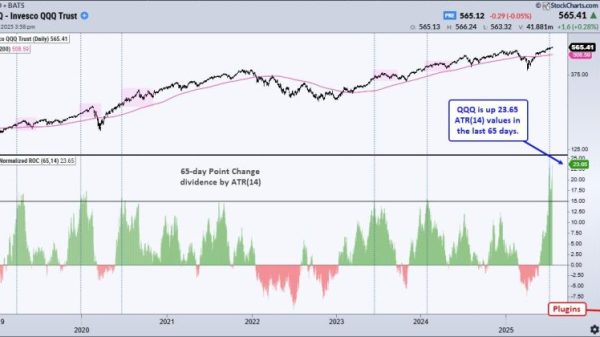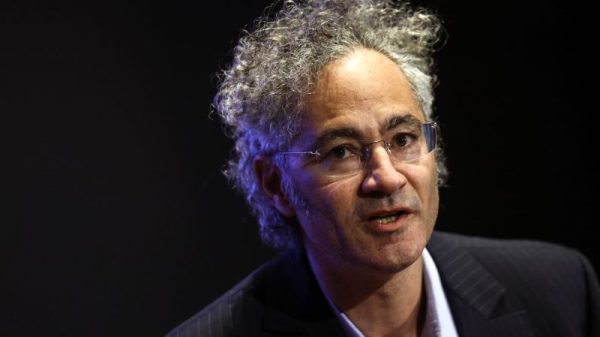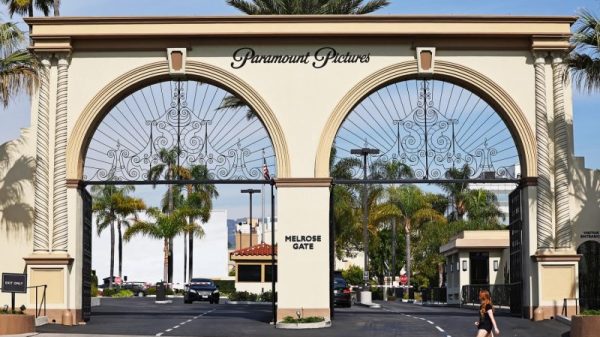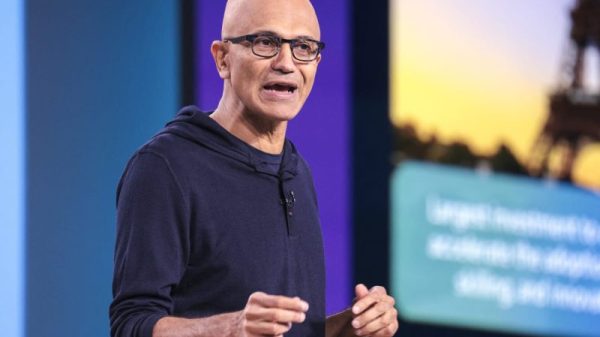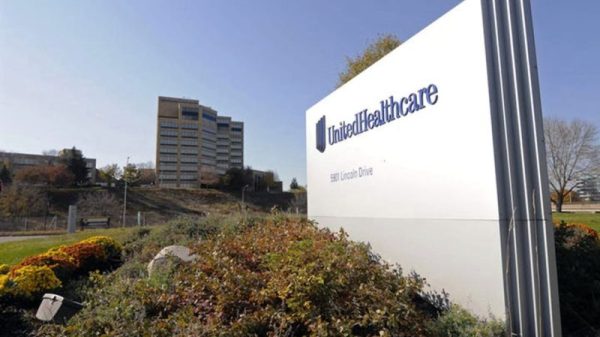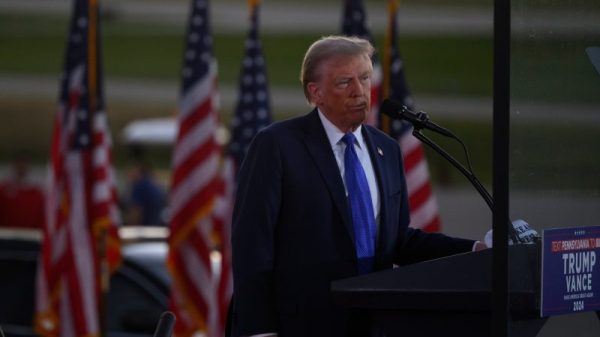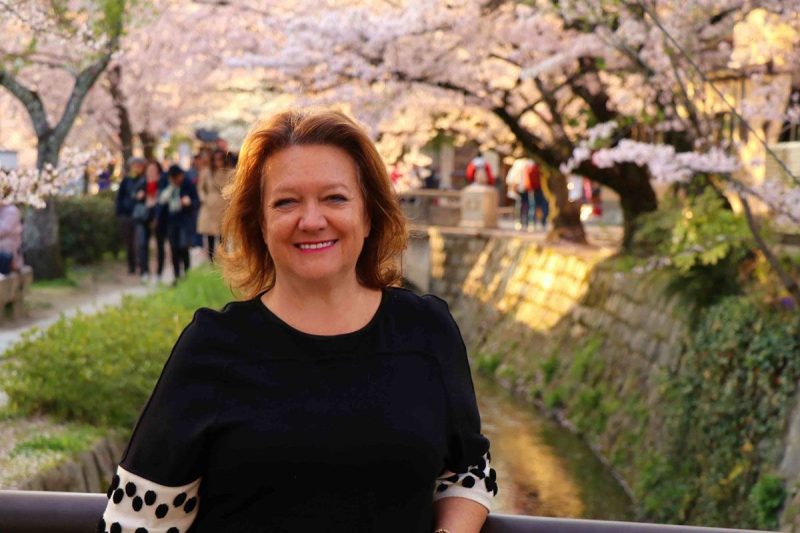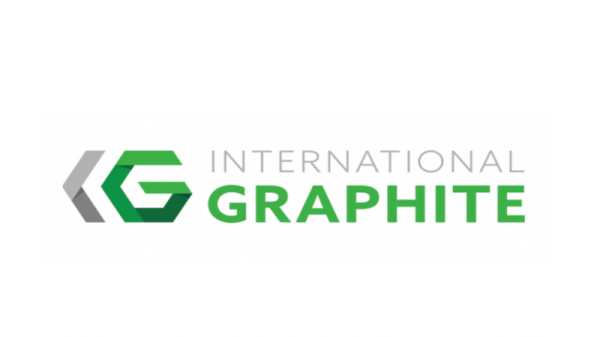Australian billionaire Gina Rinehart has become a formidable force in the global mining industry.
After taking the helm of her father’s iron ore mining firm Hancock Prospecting in 1993, Rinehart embarked upon a diversification strategy that has vastly expanded her resource empire. Today, Australia’s richest person has investments in many of the world’s most strategic commodities such as lithium, rare earths, copper, potash and natural gas.
One of those investments is Arafura Rare Earths (ASX:ARU,OTC Pink:ARAFF), which even in a low price environment for rare earths has managed to secure nearly AU$1.5 billion in debt financing and is, as of July 2024, confidently embarking on a AU$1.2 billion equity financing to advance its Nolans project in the Northern Territory. With a 10 percent equity stake, Rinehart’s Hancock Prospecting is Arafura’s largest shareholder.
In addition to Arafura, entrepreneur Rinehart’s investment portfolio also contains other ex-China, green-transition-focused companies such as Australian lithium firm Liontown Resources (ASX:LTR,OTC Pink:LINRF), as well as rare earths producers MP Materials (NYSE:MP) and Lynas Rare Earths (ASX:LYC,OTC Pink:LYSCF). Rinehart’s role in the acquisition of Azure Minerals’ Andover lithium project in Western Australia alongside lithium giant SQM (NYSE:SQM) also made headlines in May of this year.
Who is Gina Rinehart?
Mining magnate Gina Rinehart is the richest person in Australia and one of the world’s richest women. She is the daughter of Australian mining mogul and Hancock Prospecting founder, the late Lang Hancock. As the current executive chair of Hancock Prospecting, Rinehart won the inaugural Lifetime Achievement Award from CEO Magazine in 2019.
Rinehart was appointed as an Officer of the Order of Australia in 2022 for her “distinguished service to the mining sector, to the community through philanthropic initiatives, and to sport as a patron.”
How did Gina Rinehart get rich?
Gina Rinehart inherited Hancock Prospecting after her father’s passing in 1992. The following year, Gina Rinehart’s company acquired the Roy Hill tenements. Centering the massive project as the cornerstone of the company, Hancock Prospecting has greatly benefited from the iron ore market boom that began in the early 2000s.
Today, Roy Hill is Australia’s largest iron ore mine, producing 60 million tonnes of iron ore per year. The mine was recently approved to increase its annual production to 70 million tonnes. Success at Roy Hill has made Hancock Prospecting Australia’s most valuable private company, worth an estimated AU$15.6 billion.
As with many of the world’s most successful billionaires, Gina Rinehart has developed an investment strategy based on strategic partnerships as well as diversification to mitigate risk and build value. Under her leadership, Hancock Prospecting Pty Limited (HPPL) as well as the HPPL Group of companies has expanded into some of the world’s most economically important markets, such as real estate, agriculture, energy and critical metals.
What mining companies does Gina Rinehart own?
Through her company Hancock Prospecting, Gina Rinehart owns interest in mining companies across many sectors, including iron ore, lithium, rare earths, copper, oil and gas, as well as potash. While much of her investment portfolio is focused on Australia and ASX companies, Rinehart is actively strengthening the geographical diversification of her investments.
In recent years, Rinehart has made a series of key investments in mining companies, especially targeting critical metals projects in Germany, Brazil, Ecuador and the United States. These include exploration-stage firms such as Titan Minerals (ASX:TTM) and Azure Minerals as well as producers such as Atlas Iron and MP Materials.
Where does Hancock Prospecting mine iron?
Vehicles hauling ore at Roy Hill iron ore mine.
Photo of Roy Hill iron ore mine via Roy Hill.
Hancock Prospecting’s Roy Hill and Hope Downs iron ore mines are located in the resource rich Pilbara region of Western Australia.
Roy Hill has attracted strategic partnerships with major global enterprises: Marubeni (TSE:8002) with a 15 percent equity stake; POSCO (NYSE:PKX,KRX:005490) holds a 12.5 percent stake; and China Steel Corporation (TPE:2002) has a 2.5 percent equity position. The minority partners purchase a combined 28.75 million tonnes of iron ore annually from Roy Hill’s production.
The Hope Downs iron ore complex is another of Australia’s largest iron ore projects. A 50/50 joint venture partnership with Rio Tinto (ASX:RIO,NYSE:RIO,LSE:RIO), Hope Downs hosts four open-pit mines and has an annual production capacity of 47 million tonnes. Hope Downs has also been the subject of a more than decade-long civil dispute in a Western Australian court over royalties, put forth by the descendants of Lang Hancock’s business partner Peter Wright as well as Rinehart’s own children. A judgment in the case is expected this year.
Gina Rinehart’s iron ore investments
Gina Rinehart’s iron ore investments in Western Australia extend beyond Roy Hill and Hill Downs to its subsidiary Atlas Iron’s three producing mines and a pipeline of development projects, as well as an earn-in agreement on Legacy Iron Ore (ASX:LCY) and Hawthorn Resources’ (ASX:HAW) Mt Bevan project through its subsidiary Hancock Magnetite Holdings.
Rinehart’s Hancock Prospecting acquired Atlas Iron in 2018 through a AU$427 million deal that turned out to be dirt cheap as the company would go on to deliver AU$1.5 billion in revenues over the next three years alone.
Today, Atlas Mines operates the Mt Webber, Sanjiv Ridge and Miralga Creek mines. Production from these mines in its fiscal year ended June 2023 led to a AU$222 million dividend payment for Rinehart’s Hancock Prospecting.
At Mt Bevan, as part of its earn-in agreement, Hancock completed a prefeasibility study( PFS) for a 12 million tonne per year high-grade magnetite project in July of this year. The PFS incorporated a mineral resource estimate totalling 1,291 million tonnes, which was completed by Atlas, and delineates a capital cost of AU$5 billion to develop the potential Mt Bevan mine.
Completion of the PFS increased Hancock’s stake in the JV ownership from 30 percent to 51 percent with Legacy now holding 29.4 percent and Hawthorn 19.6 percent.
Like iron, coal is another essential material in steel manufacturing. To this end, Rinehart is also pursuing an investment in a past-producing metallurgical coal mine in Alberta, Canada. Hancock Prospecting subsidiary Northback Holdings is the owner of the proposed Grassy Mountain steelmaking coal project in the province’s Crowsnest Pass region. Northback is awaiting approval of its exploration licenses for the project.
Gina Rinehart’s lithium investments
Gina Rinehart has made a flurry of lithium investments over the past year, including in Azure Minerals’ Andover lithium project, Liontown Resources, Delta Lithium (ASX:DLI) and Vulcan Energy Resources (ASX:VUL).
In June 2023, Rinehart’s Hancock Prospecting signed a separate joint venture earn-in agreement for the Mt Bevan magnetite project, which is discussed above, this time for the lithium, nickel and copper mineralization at the project. The agreement will similarly see Hancock able to earn a 51 percent interest by completing certain milestones.
Last September, Rinehart made headlines when she took a position in Liontown Resources and then rapidly increased the position to 19.9 percent over the following month. This allowed Hancock, which was now Liontown’s largest shareholder, to effectively block Albemarle’s (NYSE:ALB) accepted takeover of the smaller lithium company.
However, since then, Liontown’s stock has taken a hit as the economics for its near-production Kathleen Valley lithium project in Western Australia have been damaged by the effects of high inflation and low lithium prices. Ultimately, in January, Albemarle decided to sell off its 4 percent stake in Liontown Resources. The lack of any further moves or comment by Rinehart in relation to Liontown Resources has led to speculation she may be waiting for the right opportunity to buy up the lithium company at a discount.
That wasn’t the only lithium bid Rinehart blocked last October. As is her strategy, Rinehart scooped up an 18.9 percent stake in Azure Minerals last year after SQM announced its intention for a total takeover of the company and its Andover lithium project in the West Pilbara region of Western Australia. This story had a different ending, though, as Hancock Prospecting instead joined the lithium giant in a AU$1.7 billion deal to become a co-owner of the exploration-stage Andover project, which also hosts nickel, copper and cobalt mineralisation. The deal closed in May.
Shortly after its Liontown and Azure moves last year, Hancock Prospecting continued investing in Western Australia’s lithium prospects when it participated in a AU$70.2 million fundraising for Delta Lithium in November. The proceeds of the fundraising will help Delta Lithium to fund the development of its Mt Ida lithium-gold project, which is adjacent to Hancock’s Mt Bevan joint venture project, through to a final investment decision. As of August 2024, Hancock Prospect owns 10.7 percent of Delta Lithium.
Rinehart has made lithium investments outside of Australia as well. Looking further afield to Germany, with a 7.5 percent stake, Hancock Prospecting is the second largest shareholder in Vulcan Energy and its flagship Zero Carbon lithium project in Germany’s Upper Rhine Valley, a milestone Rinehart’s company reached after investing an additional AU$20 million in Vulcan, which made headlines in June. The Zero Carbon project is slated to produce an initial 24,000 tonnes of lithium hydroxide by the end of 2025, targeting Europe’s electric vehicle manufacturing sector.
Gina Rinehart’s rare earths investments
Facilities at MP Materials’ Mountain Pass rare earths mine.
clayton harrison / Shutterstock
Gina Rinehart’s rare earth investments show she is looking to capitalise on the significant need for these critical metals outside of China. Through Hancock Prospecting, Rinehart has recently taken positions in some of the world’s most well known rare earths producing companies — US-based MP Materials and Australia’s Lynas Rare Earths — as well as development-stage Arafura Rare Earths and exploration-stage Brazilian Rare Earths (ASX:BRE).
As mentioned in the introduction to this article, Rinehart’s Hancock Prospecting is the largest shareholder of Arafura Rare Earths, giving it a 10 percent stake in the advanced-stage Nolans project in the Northern Territory. Rinehart made the investment in December 2022.
In April of this year, Rinehart made two significant moves into the sector. The first came on April 9, when it was revealed that Hancock Prospecting had acquired a 5.3 percent stake in MP Materials, the second largest rare earths producer outside of China. The company’s California-based Mountain Pass mine is the only integrated rare earth mining and processing operation in North America.
Rinehart’s investment in MP Materials could later bring in “Roy Hill-type cash flow,” Dylan Kelly, head analyst at Terra Capital, told Australian Financial Review. “Anything that is producing and not China-aligned is highly strategic. These materials are very, very hard to make and there’s a lot of demand in making magnets for electric vehicles and wind turbines.’
One week later, Rinehart’s Hancock Prospecting also took up a 5.82 percent interest in Lynas Rare Earths, the largest ex-China rare earths producer. The Australian rare earths miner produces the critical metals at its Mount Weld mine in Western Australia and ships the raw material to Malaysia for processing. Lynas is also ramping up processing at its Kalgoorlie rare earth processing facility in Australia, and building light rare earths processing facilities and a heavy rare earths separation facility in Texas, US.
Rinehart’s near simultaneous investments in both Lynas and MP Materials comes after merger talks between the two rare earths behemoths stalled in February. There is speculation stirring that Rinehart’s participation could renew merger discussions, Reuters reported.
Andy Forster, Lynas investor and senior investor of Argo Investments, had his interest piqued by Rinehart’s move ‘given she’s clearly made a play across the whole space. She obviously wants to potentially have a seat at the table if there’s any chance of consolidation.’
Rinehart is also getting her foot in the rare earths door at the exploration level. Last year, Rinehart’s Hancock Prospecting made a pre-IPO investment for a 5.85 percent share in Brazilian Rare Earths, which went on to list on the ASX in December. The rare earths explorer is working its district-scale Rocha da Rocha rare earth province in the state of Bahia, Brazil. The province is highly prospective for both heavy and light rare earths, with grades of over 40 percent total rare earth oxides found. The company expects to complete an updated JORC mineral resource estimate this year.
Gina Rinehart’s copper investments
Gina Rinehart’s copper investments are centered on Ecuador’s Andean copper-gold belt, and include explorer Titan Minerals and Ecuador’s state-owned Empresa Nacional Minera (ENAMI).
Ecuador has seen a rush of major mining companies taking up positions in key copper and gold projects in recent years, placing Hancock Prospecting in the company of Barrick Gold (TSX:ABX,NYSE:GOLD), Zijin Mining (HKEX:2899) and Anglo American (LSE:AAL,OTCQX:AAUKF).
Rinehart’s Ecuadorian copper investments are in line with her shift toward the critical metals necessary for the green transition and her strategy to expand the global footprint of her mining empire.
Hancock Prospecting subsidiary Hanrine Ecuadorian Exploration and Mining has been in the region since 2017, but recently began making more investments. In March 2024, Hancock Prospecting subsidiary Hanrine Ecuadorian Exploration and Mining acquired a 49 percent stake in six mining concessions for AU$186.4 million. The deal sees it partner with state mining company ENAMI for the concessions, which surround the stalled Llurimagua copper-molybdenum project in Northern Ecuador.
In late April, Ecuador’s constitutional court nixed appeals by ENAMI and its partner in the Llurimagua project, Chile’s state-owned CODELCO, to review the March 2023 decision by Imbabura’s provincial supreme court suspending the environmental license for Llurimagua.
Shortly after the investment with ENAMI, Rinehart’s Hanrine made another play in Ecuador by striking an earn-in agreement with Titan Minerals for up to an 80 percent ownership stake in the explorer’s Linderos copper-gold project contingent on up to AU$120 million in exploration spending. Linderos is an early-exploration stage project with the potential to host a large-scale copper porphyry system. Hanrine has made an initial investment of AU$2 million for a 5 percent stake.
Gina Rinehart’s oil and gas investments
Gina Rinehart’s oil and gas investments include private firms Warrego Energy in Western Australia and Senex Energy in Queensland.
In February 2023, Hancock Prospecting won a protracted bidding war for the then-public Warrego with Warrego’s joint venture partner Strike Energy (ASX:STX) for a price of AU$0.36 per share. Warrego and operator Strike Energy maintain their 50/50 joint venture on the West Erregulla onshore gas field within exploration permit EP 469 near Perth in WA.
In early July, the West Erregulla project received primary approvals for development. The partners expect to start operations by late 2024, once final environmental approval is received. During phase one, the project is expected to produce 87 terajoules per day.
As for Senex Energy, it is a joint venture between POSCO (50.1 percent) and Hancock Prospecting subsidiary Hancock Energy (49.9 percent) that holds the Atlas and Roma North natural gas developments in Queensland’s Surat Basin. The two JV partners acquired Senex in 2022, with Rinehart’s company putting up AU$440.89 million.
Senex Energy is embarking on a AU$1 billion expansion endeavor at Atlas and Roma North this year that will see 60 petajoules of natural gas delivered to Australia’s east coast market annually by the end of 2025. This figure represents more than 10 percent of the region’s demand. Regulatory approval for the expansion was finally approved following an uphill battle with a Federal government more keen on renewable energy projects than the natural gas variety.
Rinehart once had a significant stake of nearly 20 percent in Lakes Oil, now Lakes Blue Energy (ASX:LKO), through subsidiary Timeview Enterprises. Timeview’s stake in Lakes Blue Energy has been lowered in recent years, but it remains the company’s fourth largest shareholder at 4.63 percent.
Gina Rinehart’s potash and agriculture investments
Gina Rinehart’s potash and agricultural investments center on Hancock Prospecting’s ownership interests in multiple premium cattle stations in Australia, and the company’s royalty revenue generated from the Anglo-American-controlled Woodsmith potash project currently under construction in the United Kingdom.
With an original investment of AU$380.6 million in 2016 to then-owner Sirius Minerals, Hancock Prospecting has a 5 percent revenue royalty on the first 13 million tonnes of fertiliser produced from Woodsmith and 1 percent thereafter. Hancock also has a 20,000 tonne-a-year offtake option. The timeline for Rinehart’s royalty revenue has been pushed back, however, as Anglo is cutting spending at Woodsmith following BHP’s (ASX:BHP,NYSE:BHP,LSE:BHP) failed mega-merger with Anglo American.
Investor takeaway
With Gina Rinehart at the helm of Hancock Prospecting, the Roy Hill iron ore mine has generated stellar revenues. That wealth creation not only made her Australia’s richest person, but has also built a powerful war chest from which Rinehart is expanding her mining empire.
Investors can take cues from her recent and future moves in the mining sector. Although she may be defensive toward renewable energy technologies encroaching on agricultural land, she understands the strategical importance of investing in critical metals for the green transition such as lithium, rare earths and copper.
FAQs for Gina Rinehart
How much is Gina Rinehart worth?
Gina Rinehart’s net worth is reported to be AU$40.61 billion as of May 31, 2024. That’s up 8.5 percent over the previous year, according to figures are from the Australian Financial Review’s Rich List 2024.
‘Rinehart’s net worth jumped $3.2b in the last year thanks to multiples in the sector expanding,’ the list’s authors explain. ‘However, her iron grip on the Rich List top spot may be weakened by ore price declines in 2024, on the back of concerns over steel output reducing in China.’
What company does Gina Rinehart own?
Gina Rinehart owns Hancock Prospecting, a private company founded by her late father Lang Hancock. Originally an iron ore mining company, today the firm has strategic stakes in a wide-range of metals and commodities from lithium and rare earths to copper and agriculture, which are detailed in this article.
Can I buy shares in Hancock Prospecting?
While investors can’t buy public shares in privately held Hancock Prospecting, they can take equity positions in the publicly traded stocks in which the company itself holds interest. Some of these stocks include Arafura Rare Earths (ASX:ARU,OTC Pink:ARAFF), Liontown Resources (ASX:LTR), MP Materials (NYSE:MP) and Lynas Rare Earths (ASX:LYC).
Does Gina Rinehart own Rio Tinto?
Although she has interest in many mining companies and the two companies share the Hope Downs joint venture, Gina Rinehart does not own mining giant Rio Tinto. Yahoo Finance reports that Aluminum Corporation of China (SHA:601600) is its largest shareholder at 11 percent, followed by BlackRock (NYSE:BLK) with 8.7 percent and the Vanguard Group at about 3.1 percent of shares.
What does Gina Rinehart think about nuclear energy?
Gina Rinehart is pro-nuclear energy. During a speech at The Australian Bush Summit in 2023, she railed against the impact of wind and solar farms on much needed agricultural land in Australia. She suggested that nuclear energy offers a more viable solution for reaching the country’s net zero targets.
Is Gina Rinehart the richest person in Australia?
Gina Rinehart is the richest person in Australia. In 2024, she made the Australian Financial Review’s Rich List for the fifth consecutive year in a row. The next richest Australian, real estate developer Harry Triguboff, trails her by about AU$14 billion.
Is Gina Rinehart the richest woman in the world?
Gina Rinehart is not the richest woman in the world, but she does rank as the world’s ninth richest woman in 2024. The distinction of richest woman in the world goes to France’s Francoise Bettencourt Meyer, the heir of L’Oréal (EPA:OR). Rinehart previously held the title in 2012.
Securities Disclosure: I, Melissa Pistilli, hold no direct investment interest in any company mentioned in this article.






